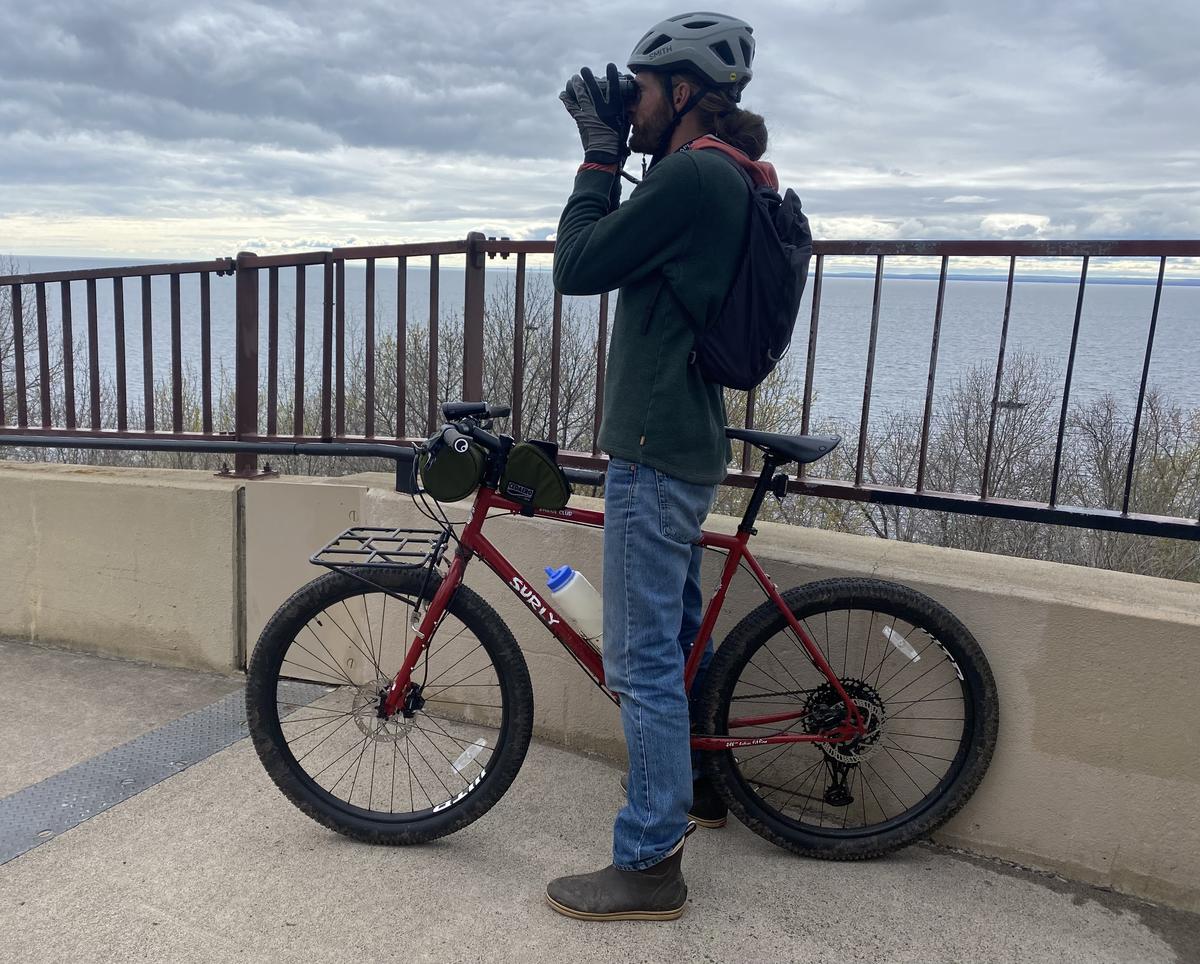For a while there, it seemed Steve Kolbe might just make a career of being a roving field technician. Upon getting his bachelor’s degree from Miami University, he spent five years travelling North America – from Maine to California and Alaska to Jamaica – doing 20 different field research jobs related to birds.
The year 2015 brought him to Duluth to work for Hawk Ridge Bird Observatory and he enrolled in UMD’s Integrated Biological Sciences master’s program. Throughout his time at UMD, he worked as a summer field tech doing breeding bird point counts for NRRI’s Avian Ecology Lab. Upon completion of his degree in 2018, Kolbe was hired at NRRI as a full time Avian Ecologist.
“My major area of interest is in bird movements,” said Kolbe. “Everything from the movement of fledgling birds within their breeding territories to the migratory movements of birds that are heading to different continents.”
Wetland Wildlife

Kolbe is currently focused on helping to determine the habitat needs of Black Terns and Forster’s Terns in Minnesota wetlands – but not just any wetlands. These terns breed in high-quality wetland habitats – clean water, diverse vegetation, high-quality insect or fish prey – throughout the western portion of the state. That means they are excellent indicators of water quality and wetland health, which is important to other wildlife and humans.
“Surprisingly, there’s no current effort to understand the status of their populations in Minnesota,” said Kolbe, “even though there appear to be range-wide declines.”
With funding provided by the Minnesota Environment and Natural Resources Trust Fund, Kolbe is digging into understanding what habitat features are important to provide recommendations on how to create higher quality wetland habitat. This information will also provide critical information about the status of tern populations in the state.
“Black and Forster's Terns are amazing species that deserve a place to live here – like all native species,” he said. “As great indicators of habitat health, stabilizing or increasing their populations would mean we have increased quality wetland habitat as well.”
In addition to wildlife habitat, wetlands provide a wealth of benefits to humans and the environment including water filtration and carbon sequestration.
Collaboration
Connecting birds and other wildlife to fields such as hydrology, silviculture, carbon and minerals within NRRI and the University taps into the expertise of a wide variety of disciplines and supports sound, long-term decisions regarding how we manage all of our natural resources.
“We also strive to stay current with the latest technologies and always think about how they could be used to study wildlife,” said Kolbe. From camera and video technology, to using tracking technology to better understand movement and behavior of birds, the Avian Ecology Lab works with collaborators across North America to improve understanding of birds and ecology.
Central Support
Following NRRI’s carefully crafted procedures and the University’s many protocols can be confusing. Kolbe says he’s especially grateful for the assistance of Central Administrative Specialist Tammy Thomasson-Ehrhart, Jenna Ballard and Lisa Paczynski.
“They are always willing and able to help with any problems that arise, and do it cheerfully and capably,” said Kolbe. “They will either know the answer or point me to the person who can help me. And they all make me feel very welcome at NRRI.”
Not Enough Birds
In his off-work hours, Kolbe still enjoys time with his feathered friends. He is an experienced photographer specializing in pictures of flying birds.
“I spend much of my off time watching birds! Most of my hobbies relate to this,” he said. “Even while out riding my bicycle, I’m listening to and looking for birds.”
